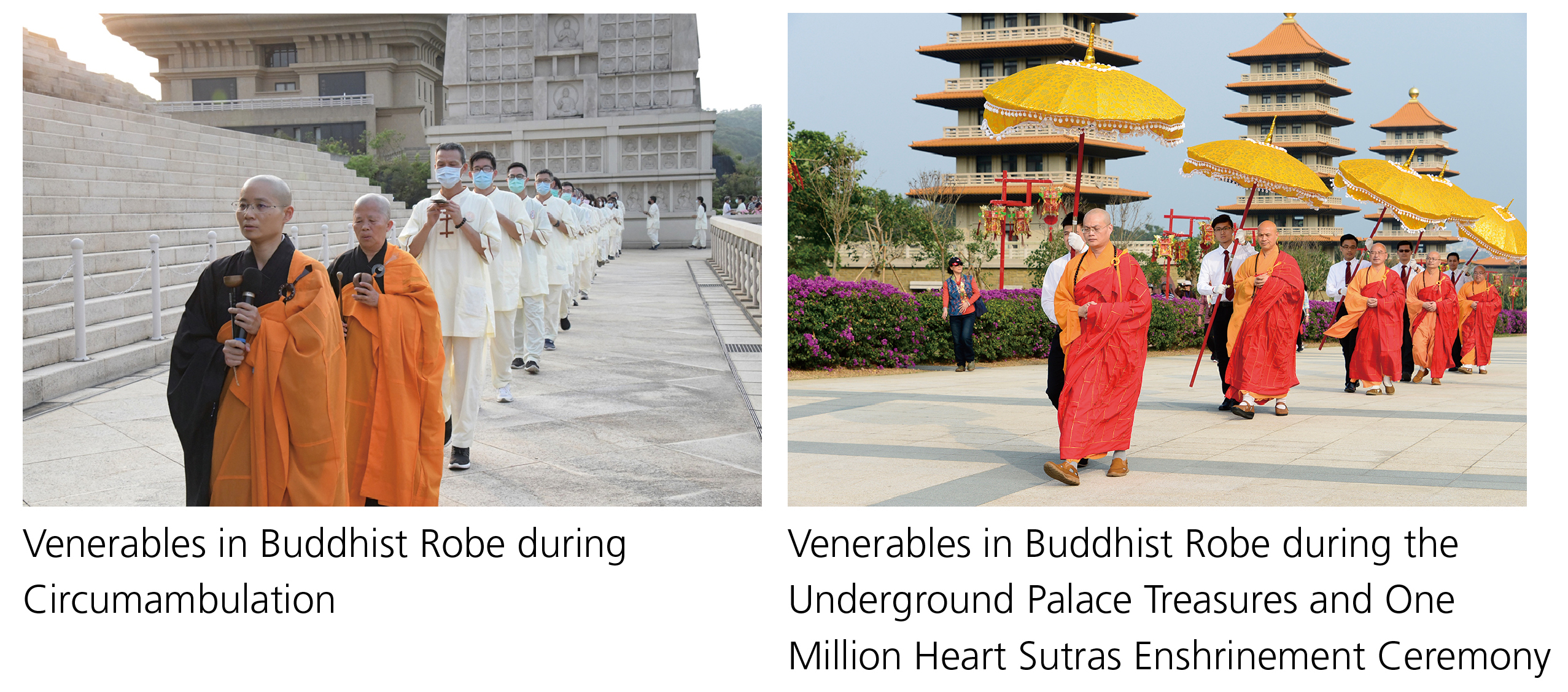文/O'Brien, Barbara. "The Buddha's Robe." , Aug. 28, 2020
圖/佛陀紀念館 Buddha Museum
如今佛教僧侶所穿著的袈裟,其歷史可追溯至2500年前,佛陀在世的時代。僧侶開始將舊布縫製成袈裟,當時印度的托缽聖人也都是這種穿著。隨著僧團規模的增長,佛陀認為有必要為袈裟制定一些規則,而這些規定則記載在巴利三藏的律藏中。

袈裟
佛陀教導僧團利用廢棄的布料製作袈裟,這些回收的廢棄布料可能是被老鼠或牛咬壞的,也可能被火燒過,或沾上新生兒或女性生理的出血,甚至是用來包裹屍體的布,而僧侶們就是到垃圾堆或是焚化屍體的場所去撿拾這些不要的布料來使用。裁剪去不能使用的部分後,將布料洗淨,接著將植物的塊莖、樹皮、花朵、葉子,以及香料如薑黃、番紅花,放入沸水中與布料一同熬煮,讓袈裟能夠染上橘紅色。在東南亞地區的南傳佛教國家,僧侶們仍然穿著香料色的袈裟,色調有咖哩、茴香、紅辣椒粉或是如番紅花的藏紅色等。
田相
根據律藏的記載,佛陀指點十大弟子之一的阿難尊者,將稻田的阡陌形狀,設計成紋路縫製在袈裟上。阿難陀將布條縫上,再用較窄的布條作間隔,形成如同稻田的模樣。直至今日,不同的宗派仍然沿襲了這個傳統的設計,這個樣式通常是以五條的模式出現,有時也會是七條或九條的款式。在禪宗的傳統裡,這個稻田的樣式所代表的其實是無形的福田;然而也有人認為是曼陀羅的形狀,代表著世界。
The
robes of Buddhist monks and nuns are part of a tradition going back 25
centuries to the time of the historical Buddha. The first monks wore robes
patched together from rags, as did many mendicant holy men in India at the
time. As the wandering community of disciples grew, the Buddha found that some
rules about robes were necessary. These are recorded in the Vinaya-pitaka of
the Pali Canon or Tripitaka.
Kasaya
The
Buddha taught the first monks and nuns to make their robes of "pure"
cloth, which meant cloth that no one wanted. Types of pure cloth included cloth
that had been chewed by rats or oxen, scorched by fire, soiled by childbirth or
menstrual blood, or used as a shroud to wrap the dead before cremation. Monks
would scavenge cloth from rubbish heaps and cremation grounds. Any part of the
cloth that was unusable was trimmed away, and the cloth was washed. It was dyed
by being boiled with vegetable matter -- tubers, bark, flowers, leaves -- and
spices such as turmeric or saffron, which gave the cloth a yellow-orange color.
This is the origin of the term "saffron robe." Theravada monks of
southeast Asia still wear spice-color robes today, in shades of curry, cumin,
and paprika as well as blazing saffron orange.
The Rice Paddy
According
to the Vinaya-pitaka, the Buddha asked his chief attendant Ananda to design a
rice paddy pattern for the robes. Ananda sewed strips of cloth representing
rice paddies into a pattern separated by narrower strips to represent paths
between the paddies. To this day, many of the individual garments worn by monks
of all schools are made of strips of cloth sewn together in this traditional
pattern. It is often a five-column pattern of strips, though sometimes seven or
nine strips are used. In the Chan tradition, the pattern is said to represent a
"formless field of benefaction." The pattern might also be thought of
as a mandala representing the world.

